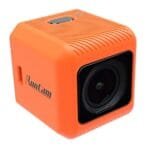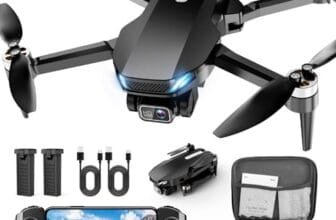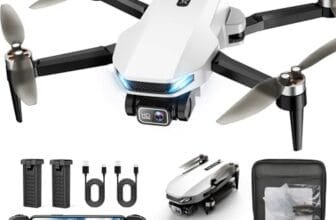
Drones have transformed the way bridges are inspected, offering safer and more efficient solutions. This blog explores the best drones for bridge inspections, focusing on their unique capabilities and advantages.
Inspecting bridges is crucial for safety and maintenance. Traditional methods can be risky and time-consuming. Drones provide a safer alternative. They capture detailed images and videos. Ideal for hard-to-reach areas. Drones can operate in GPS/GNSS enabled and denied environments. This flexibility is vital for accurate data collection.
These high-tech tools are essential for bridge safety. They reduce the need for human inspectors in dangerous situations. This blog covers top drones for bridge inspections. Learn about their features and benefits. Discover how they enhance inspection accuracy. Safer inspections, better data, and efficient processes await. Explore the best drones for bridge inspections today.
Drone-assisted Inspection Of Bridges And Heritage Structures

The Drone-Assisted Inspection of Bridges and Heritage Structures is ideal for civil engineers, architects, and heritage conservationists who are looking to enhance their inspection efficiency and safety. This innovative approach is perfect for professionals who need to conduct thorough and precise inspections without compromising on time or safety.
Pros:
- Enhanced Safety for inspectors by minimizing the need for physical presence in dangerous areas.
- Increased Efficiency in data collection, reducing time spent on manual inspections.
- High-Quality Imagery and data collection from difficult-to-reach areas.
- Cost-Effective compared to traditional inspection methods.
Cons:
- Initial Investment in drone technology and training can be high.
- Weather Dependency may affect scheduling and quality of data collection.
- Regulatory Restrictions may limit drone usage in certain areas.
The Drone-Assisted Inspection of Bridges and Heritage Structures offers a myriad of advanced features that significantly benefit users. One of the standout features is its ability to provide real-time data collection and analysis. This allows professionals to quickly assess the condition of structures and make informed decisions on maintenance and repairs. The use of high-resolution cameras mounted on drones ensures that even the smallest defects or issues are identified, which is crucial for maintaining the integrity of both modern and historical structures.
Another key feature is the accessibility that drones provide. Inspections that would typically require significant manpower and resources, such as those in hard-to-reach areas, can now be conducted with ease. This not only reduces the risk to personnel but also allows for a more comprehensive examination of structures, including areas that are often overlooked due to accessibility challenges. Furthermore, the cost-effectiveness of drone inspections becomes apparent as it reduces the need for scaffolding or other expensive equipment typically required for manual inspections.
To buy this product, click here.
Bridge Inspection Mastery

Bridge Inspection Mastery: A Comprehensive Guide to Ensuring Vehicle Safety is an essential resource for civil engineers, construction professionals, and safety inspectors who are dedicated to maintaining and enhancing the structural integrity of bridges. This comprehensive guide is ideal for those looking to deepen their understanding of bridge inspection processes and ensure the safety of vehicles on the road.
Pros:
- Provides detailed guidelines on bridge inspection techniques.
- Includes up-to-date information on safety standards.
- Offers insights into preventive maintenance for enhanced longevity.
Cons:
- Requires a technical background to fully grasp the content.
- May not cover advanced technologies emerging post-publication.
This guide boasts a total of 361 pages filled with in-depth knowledge, making it a substantial resource for professionals committed to vehicle and bridge safety. Published on 2025-05-27, it presents the most current practices and standards in the industry. Users will benefit from its comprehensive coverage, which includes practical examples and case studies that provide real-world application of the concepts discussed.
The features of this guide include detailed sections on inspection protocols, risk assessment, and maintenance strategies. These features provide users with the necessary tools to implement effective inspection processes that enhance vehicle safety. By utilizing this guide, professionals can improve their decision-making skills and ensure that bridges meet regulatory standards, ultimately reducing the risk of accidents and structural failures.
To buy this product, click here.
Uav Or Drones For Remote Sensing Applications

The ideal customer for UAV or Drones for Remote Sensing Applications is someone who works in environmental monitoring, agriculture, or disaster management. These individuals need reliable and versatile tools for data collection in both GPS/GNSS Enabled and GPS/GNSS Denied Environments. Whether it’s tracking weather patterns or surveying land, this book provides the necessary insights for effective deployment of UAVs in various conditions.
Pros:
- In-depth coverage of remote sensing applications using UAVs.
- Useful for navigating GPS/GNSS Denied Environments.
- Comprehensive guide with 400 pages of detailed information.
- Published by a reputable source, Mdpi AG.
Cons:
- Technical jargon may be overwhelming for beginners.
- Weight of the book might be cumbersome for portable reading.
- Not updated with the latest advancements post 2021.
This book features an extensive look at the technological capabilities of UAVs, focusing on their integration in remote sensing tasks. With 400 pages of content, it offers a deep dive into the mechanisms and strategies necessary for effective UAV deployment, making it an invaluable resource for professionals in fields like agriculture and environmental science. Additionally, it highlights the challenges and solutions for operating in GPS/GNSS Denied Environments, ensuring users can maximize UAV functionality even in restrictive conditions.
The benefits of using UAVs for remote sensing are vast, including improved data accuracy and the ability to access previously unreachable terrains. The book discusses how UAVs can transform data collection processes, providing users with the ability to conduct surveys and monitoring with greater precision and efficiency. It also covers the design and operation considerations essential for ensuring UAVs can perform optimally regardless of external navigation constraints. For those looking to enhance their operational capabilities in remote sensing, this book serves as a critical guide.
To buy this product, click here.
Frequently Asked Questions
What Are The Benefits Of Drone-assisted Bridge Inspections?
Drone-assisted inspections offer enhanced safety and efficiency. They allow access to hard-to-reach areas without scaffolding. Drones provide high-resolution imagery and data for detailed analysis. This technology reduces inspection time and costs. They also minimize human risk during inspections.
How Do Drones Improve Vehicle Safety On Bridges?
Drones improve vehicle safety by detecting structural issues early. They provide real-time data, allowing for prompt maintenance. This proactive approach prevents potential accidents. Drones also monitor traffic patterns and bridge conditions, enhancing overall safety. Their aerial view offers comprehensive insights into bridge health.
Can Drones Operate In Gps-denied Environments?
Yes, drones can operate in GPS-denied environments. They use alternative navigation systems like visual-inertial odometry. This allows them to function without GPS signals. These systems rely on cameras and sensors for navigation. Drones can still perform accurate inspections in challenging environments.
Why Use Uavs For Remote Sensing Applications?
UAVs offer precise data collection for remote sensing. They provide high-resolution images and multispectral data. UAVs cover large areas quickly and efficiently. They are cost-effective compared to traditional methods. UAVs are versatile and adaptable for various applications, including environmental monitoring and infrastructure assessments.
How Comprehensive Is The Bridge Inspection Mastery Guide?
The Bridge Inspection Mastery guide is highly comprehensive. It covers various inspection techniques and safety protocols. The guide provides step-by-step instructions for thorough inspections. It includes case studies and expert insights. This makes it an invaluable resource for ensuring vehicle safety on bridges.
Conclusion
Drones are changing how we inspect bridges. They offer new ways to check structures without risking human safety. Drone-assisted inspections help find problems early. This can prevent major issues later. Using drones is efficient. It saves time and reduces costs for bridge maintenance.
These flying devices are useful even in areas with no gps signals. They can gather data remotely and accurately. It is important to choose the right drone for bridge inspections. Consider factors like camera quality and battery life. Also, think about how easy it is to operate.
Some drones are better for complex inspections. Others are suited for simpler tasks. With the right drone, bridge inspections become easier and more effective. This ensures vehicle safety and extends the life of structures. Drones are not just tools; they are partners in keeping our bridges safe and sound.











